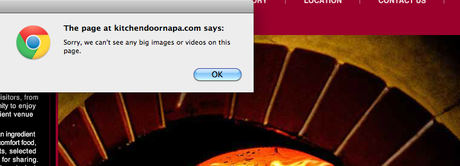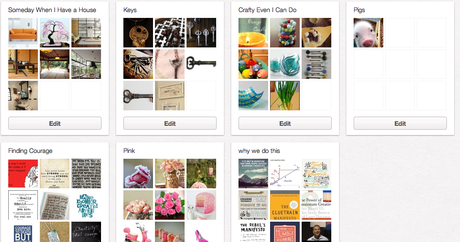As I work with brands on their digital strategies, I’m finding that Pinterest is worth exploring for a number of reasons: to build brand awareness; for consumer or constituent interactions in social and mobile spaces; and for leveraging visual content easily and integrating it into other online channels, just to name a few.
Pinterest isn’t complicated to use, and even my self-professed “non-techie” clients are able to start pinning in minutes including from their smartphones. Like with any new communications or marketing tool, we work hard to make sure business strategy leads the adoption and use of Pinterest.
So far, my clients love Pinterest – both the use of it and the results they’re seeing, most of which are tied directly to their business or organizational goals, but some of which are surprising and unexpected. I’ll post some Pinterest case studies here over the next few months. In the meanwhile, I wanted to point out three things that brands should consider as they begin using Pinterest.
1. Make sure your website is “Pinterest-Ready.”
Using a lot of Flash? Chances are, Pinterest will not be able to find an image or video to pin on that page. If you are hoping people will come to your site to pin your images (which can then drive traffic back to your site), they’ll get frustrated when they come up empty on pinable images. Of course, they can also do a Google search and find a related pinable image to use (although it may not lead people to your website), but why make them work to promote their love of your brand? If you feel your target audience fits the Pinterest demographic and that you have pin-worthy images, you may want to rethink your site for ways to provide pinable images.

2. Rearrange Your Boards
Many brands are out there with big blank spaces on their main Pinterest page. Did you know you can rearrange the boards? Log into Pinterest and go to your brand page, then click the Rearrange Board button. Drag and drop boards into the positions you feel works best for what you’re hoping to convey and achieve.

Blanks in boards look…sloppy:

3. Follow Just the Relevant Boards
If you’re wondering who to follow via your brand’s Pinterest account, my advice again is to think strategically: what industries, companies, organizations and brands are complementary? Look for your vendors, partners, colleagues and customers, too. Follow competitors? Maybe – but you might end up repinning their pins and sending more traffic their way. That is kind and generous of you, but perhaps just keeping an eye on their accounts is a better way to go.
Then when you go to follow other accounts, stop a moment and ask yourself “Do I need to follow all of their boards?” If so, click the Follow All button below their photo or logo (left side toward the top). If not, just click the Follow button under the boards you specifically want to follow.

These are just a few tips and ideas for brands looking to use Pinterest effectively. You’re going to start seeing a lot of advice about Pinterest from many different sources. Whatever you choose to do, always make sure it is rooted in sound business strategy and practices while keeping an open mind to the way Pinterest – and other social mobile technologies – are changing the very way we communicate with our customers.
How are you using Pinterest as a marketing tool?

